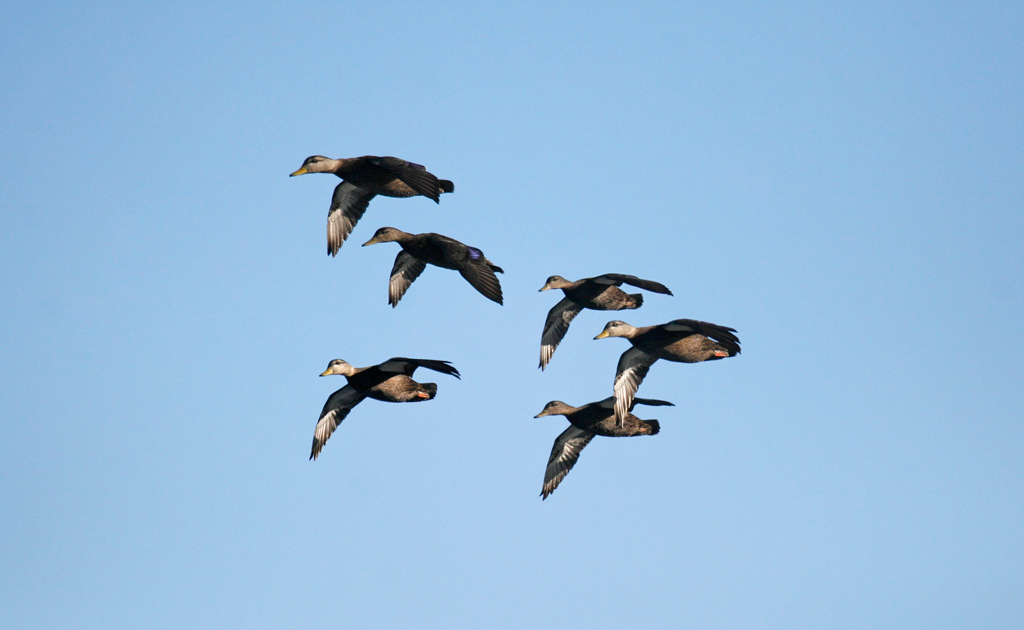Migration Alert: North Carolina Hunters Enjoy Early-Season Success, Numbers Increasing
Nov. 21, 2023 – Atlantic Flyway – North Carolina
Nov. 21, 2023 – Atlantic Flyway – North Carolina

Waterfowlers in coastal North Carolina are reporting some success on the various sounds and rivers along the Atlantic coast inside the storied Outer Banks. An associate who hunted Pamlico Sound last week reports steady bird activity and good gunning for divers and sea ducks, with a mixed bag that included redheads, bluebills, ringnecks, scoters and more.
This early season ends Nov. 25 and the next season opens Dec. 19.
The buildup of waterfowl has occurred despite warm temperatures and overall dry conditions.
Jake Merendino, DU’s South Atlantic biologist, has received reports of good numbers of birds, including green-winged teal, pintails, American wigeon, and black ducks along the Pamlico Sound coastline. Wood duck numbers also seem to have increased on inland waters, and ringnecks have found the Suggs Mill Pond Game Land impoundments and bay lakes.
“It’s abnormally dry on most of the coastal plain,” Merendino says. “You can’t find a mud puddle anywhere. I’ve heard from a number of folks who don’t have enough water to fill impoundments to target levels.”
While water in swamps and beaver ponds is sparse, the buck-toothed engineers are credited with saving the day in a few areas, such as Whitehall Plantation Game Land, which includes a network of bottomland hardwoods and cypress-tupelo swamp along the Cape Fear River in Bladen County. There, beavers have impounded an array of ponds and sloughs with plenty of flooded timber. Although levels are down, Merendino says he was surprised to see as much water as he did, adding these areas offer a “fair amount of good wintering habitat for waterfowl.”
“If hunters have access to good wetland habitat, they’ll likely be very successful chasing after ducks,” Merendino says.
Waterfowl numbers on the U.S. Fish and Wildlife Service’s Alligator River and Pea Island National Wildlife Refuges are often a good barometer of how the migration is progressing. USFWS Biologist Brian Van Druten says he doesn’t have “hard numbers” from formal bird counts yet, but overall waterfowl numbers have been increasing at Pea Island and appear to be consistent with their historic, seasonal averages.
Except for Pea Island’s South Pond, water levels are close to target in the impoundments, Van Druten says. Tundra swans are piling in. Recent arrivals upped the estimated number of the big white birds to more the 700 on South Pond alone. The agency is also flooding impoundments on the Alligator River NWR, and tundra swans have been among the first to move in to capitalize on the additional habitat.
“Northern pintails and American wigeon make up the majority of the ducks currently present on the impoundments, but there are also gadwalls, American black ducks, ruddy ducks and other species in smaller numbers mixed in,” Van Druten says.
Stay up to date with the latest migration information.